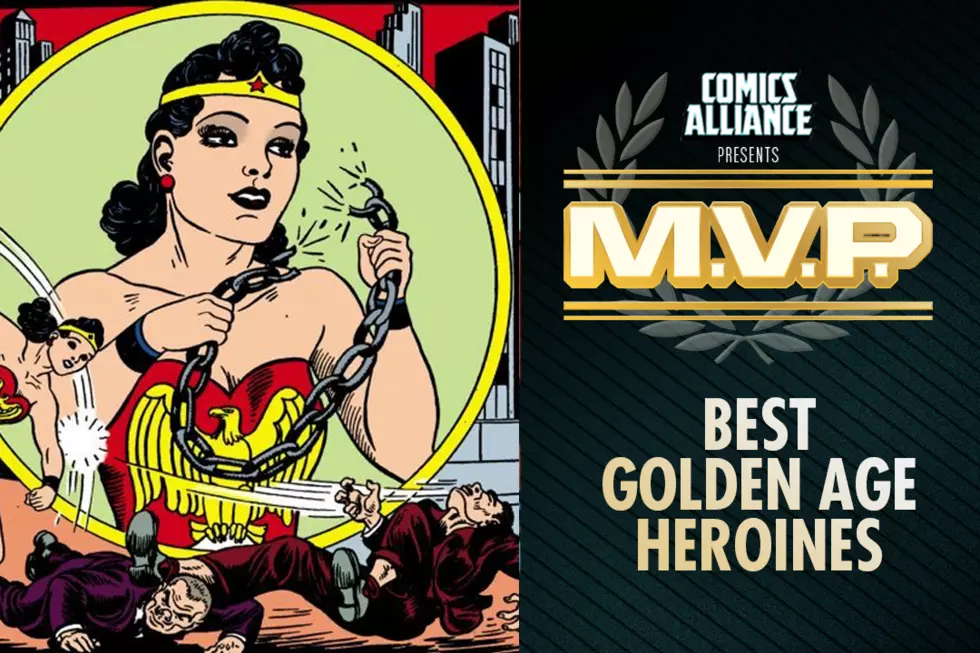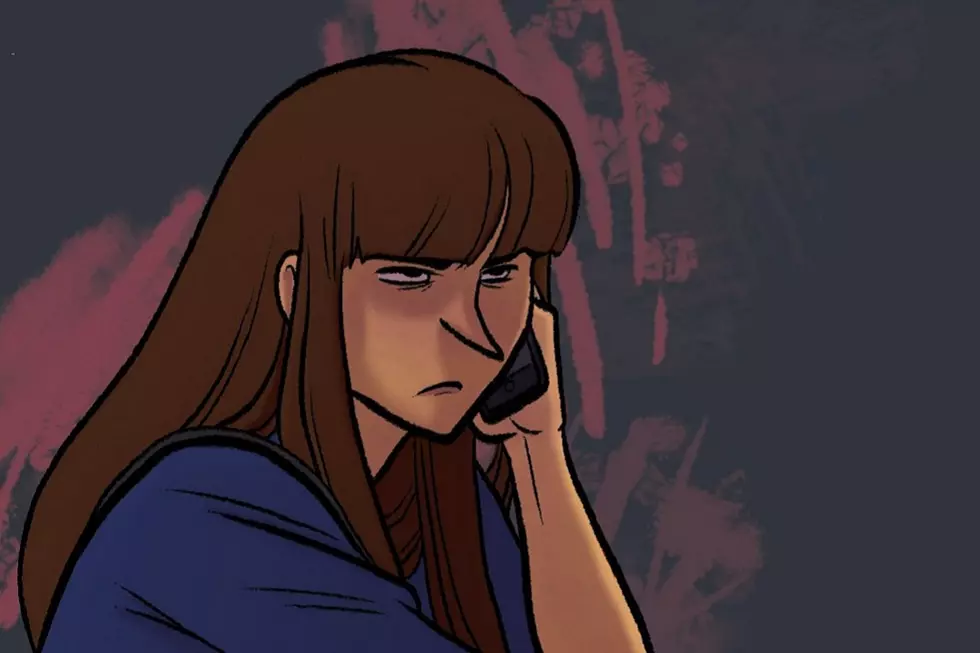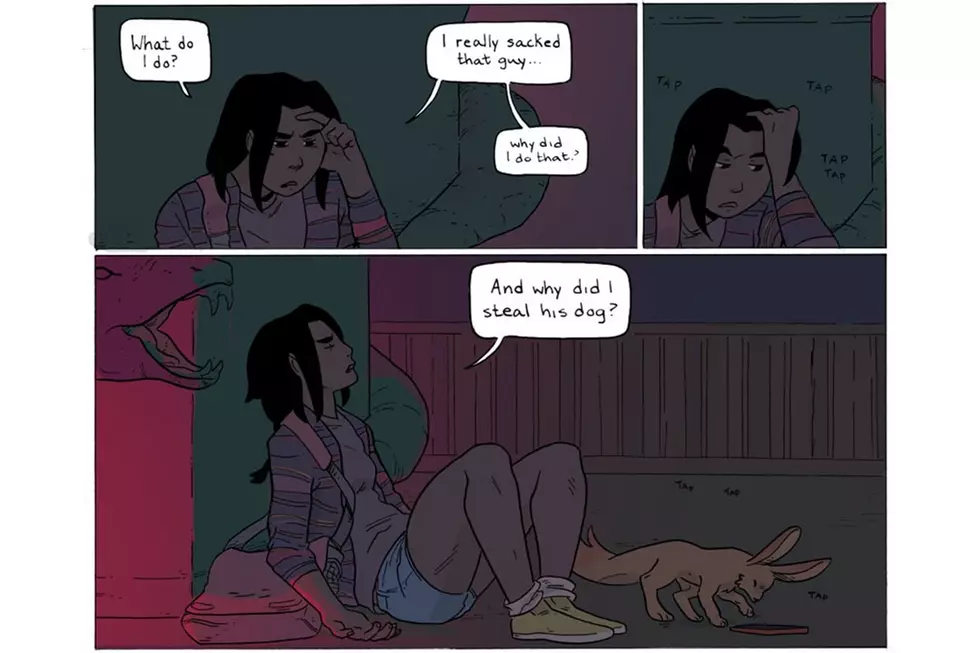
Do Powers Make The Woman? ‘Strong Female Protagonist’ Creators On Superheroes And LARPing
Brennan Lee Mulligan and Molly Ostertag, creators of the webcomic Strong Female Protagonist, are passion incarnate. They love their readers. They are ecstatic that Top Shelf decided to distribute the successfully-Kickstarted first print volume of SFP, which is on sale now. They are exasperated by the state of women in comics today. And they’re out to do something about it.
Through Alison Green, the eponymous strong female protagonist, Mulligan and Ostertag explore a world of stark imbalance—a world where our heroine, once a superhero, is now a disillusioned college student searching for truth in a complex world. Do powers make the woman? Does strength only come in one form?
ComicsAlliance sat down with Mulligan and Ostertag to discuss these questions, memories of LARP camp, making sure each and every henchman gets a backstory, and more.
ComicsAlliance: Where did your collaboration come from? And where did the idea for Strong Female Protagonist enter into that?
Molly Ostertag: We’ve known each other for quite a long time. We went to a live action roleplaying summer camp together, so we have some nerd cred. We always had a strong creative connection—Brendan would build these worlds and fantasies for the camp, and I would visualize them. I’d make sets and do illustrations. We had a really strong aesthetic connection of things that we thought looked cool. We were always planning to collaborate on something at some point.
Brennan Lee Mulligan: My introduction to Molly was that I wrote this game at this camp we’re referring to. After the game concluded, Molly drew a bunch of the characters in really beautiful detail. I think my first conversation to you was saying, “these look exactly like how the characters look in my head.” It was something I hadn’t experienced before, looking at an illustrator’s work and realizing that it perfectly captured something quintessential about the characters. There was always the idea on the horizon for us, since we were kids, to collaborate on something.
The idea for Strong Female Protagonist came about very specifically on our part from a reaction to a use of the term in literary discussion that we didn’t necessarily agree with. There’s an element to SFP that started as a writing exercise. Like, how would you make a character strong in every sense of the word? How could you make a strong female protagonist and not betray some element of that title? So, strong in the literary sense of making her complex and three dimensional. Strong in the heroic sense, meaning having great moral conviction. And then, strong in the superhuman sense, which is kind of a play on words of the title.
MO: We both had such frustration with the way women are portrayed in nerdy media, and as nerds. I’m a woman, and well, Brennan knows women.
BLM: I know, like, a bunch of women! [laughs]
MO: Like more than five!
BLM: You can put that in there: I know more than five women.
MO: So we were just so tired of how women are portrayed in these stories and we decided to make a bunch of female characters who are cool.
BLM: The plot of SFP grew out of a desire to pursue that kind of story. Wanting to give a female protagonist a classic superhero story. She struggles with power, alienation, responsibility. The mission statement of SFP is to give that classic superhero story to our characters.
MO: Rather than have a character who’s a “strong woman,” who’s punching down the patriarchy, we have a character whose womanhood in incidental to the story. A story where that can be empowering in and of itself, that it can be a story with a bunch of women grappling with issues that aren’t “women’s issues.”
BLM: In the world of the comic, we have a bunch of female superheroes very established within the cosmology of this universe. The fact that they’re women…the world cares a lot less about that than the fact that they can lift aircraft carriers over their head, regenerate, all of that.
CA: So, why a webcomic, rather than pitching it somewhere like Image or First Second? And how did your deal with Top Shelf come about? You Kickstarted the book, but are having it distributed through an established publisher.
BLM: I love this question, because it’s easy now to make it out like it was choice to do a webcomic. [laughs] But two years ago, we didn’t have anyone at Image’s phone number.
MO: I was a sophomore at SVA in the cartooning program. Brennan was doing improv and bartending. We had the story and we knew we wanted to make it. When you’re a sophomore in art school—I think I was 19 or 20—you don’t pitch to Image. That wasn’t even a consideration.
BLM: There was almost a mental health aspect too. The creative work I’d been doing was so dictated by the people above me, and I was working for hire in jobs here and there. I felt like I’d love to do a project no one had any say over other than myself. I approached Molly, and…well, the point was that no one could tell us what to do!
MO: Yeah. I was frustrated, because the format at SVA was very short, experimental comics. I wanted to do something long, to build characters people cared about. We wanted to do the story more than we wanted to do the pitching process.
BLM: There was no consideration of, well, who are we taking this story to? It was like, let’s tell this story. Let’s put it online. We didn’t even hit the bricks to promote, we were just really passionate about this story and we wanted to tell it.
MO: In retrospect, I’m proud. It We were making no money, we didn’t want to try to squeeze this or milk money from the handful of readers we had at the beginning. We just wanted to put it out.
BLM: We’d been up for more than a year when we put a donate button up. There were very generous people who decided to donate. We put up one update that mentioned the donate button, and I don’t think we mentioned it again. Because it was more about the story. Then there was the Kickstarter. We were able to put together a 224-page graphic novel with the money. After years of putting it up online for free, it all felt very clean to me. Like, “hey, here’s a book you could help us make—it’s all already drawn and online for free.” It’s just this new digital, democratic capitalism. Like, “hey, we’re not trying to squeeze you for anything, but if you’d like to support us you can, and get some cool art for your help.”
MO: The Kickstarter was exciting because I’d just graduated. We did it three days after my ceremony. That was cool, because I had more free time and we could amp up the amount of time the comic took up in our lives. It was so exciting—we got more money than we asked for. Through doing this, we raised the profile of the comic—and I think that’s how Top Shelf noticed. They got in touch with us and said, “hey, if you print a few more thousand copies we’ll distribute them for you.” They’ve done that with other creators too, but I don’t know that anyone but Top Shelf does that. And it’s really cool, I’m really proud to have done all of it myself, including the graphic design, and to have all the rights. But Top Shelf has clout we don’t, and can get it into bookstores that we probably wouldn’t have tried. I’m hoping that will get us a bunch more readers who don’t necessarily read webcomics, but do go to the bookstore looking for new things.
CA: Crowdfunding isn’t showing any signs of going away, and you guys are on the frontlines. How do you think it’s going to change things in this industry?
BLM: Only for the better. There’s Kurt Vonnegut quote where he talks about the death of the small artist. It’s about how—well, why would you want to listen to a singer in your local bar when you could have the best singer in the world come out of your iPod? With crowdfunding, you can find someone who speaks directly to you. There’s no middleman or gatekeeper. Power can atrophy taste, and while there are gatekeepers in the industry that do incredible things, they can be a little behind the times.
MO: They play it safe. And there are these existing power structures everywhere—and I’m going to get all social justice—of white men controlling media. Not in a conspiracy way, but that’s just how it is. And it can be so hard to get into these fields if you’re not a white man. But the internet is so horizontal. We did a superhero comic because we love that aesthetic, but we wanted to be honest about social justice issues. And you can find those people. If you have a story that’s difficult to get out there, the internet is a boon. Those people who are like you will be like, “finally, the story I’ve been waiting for. A story about someone like me.”
BLM: There’s this idea of the common denominator, that things need to be dumbed down. First of all, I don’t think that’s really true. I think it tends to be that large media companies underestimate the general audience. But even if we want to give them that point, the cool thing about Kickstarter and Patreon is that even if you have a smaller audience, you can reach that smaller audience. And because there isn’t a huge monolithic company feeding off the wealth of that property, all that property needs to survive is money to put bread in the mouth of the artist.
MO: And that’s not hard to find if you’re telling a story people like.
BLM: It becomes like a family enterprise—that’s how it feels. Even if you’re skirting the central industry, you can find an audience that’s really passionate about what you’re doing. They support you, you support them, and you can skip a lot of stuff in the middle.
MO: And the thing is, they come back around. I don’t know that I’d call Top Shelf a gatekeeper, but they’re a publisher and they accept and reject things based on how well they think they’ll sell. But if you do something like this and prove that there’s a market, they’ll come back around. Big media producers, I think, are starting to realize that for the really original work, they should look to what’s catching on online. It isn’t just cat videos.
CA: Strong Female Protagonist is a very socially engaged comic—you wrestle with issues of inequality, governmental overreach, everything that maintains the status quo. It reminded me of a popular criticism of Batman—that he’s a privileged man who targets the underprivileged, rather than address real ills. Your comic almost feels like a response to criticisms of superheroes like that. Where did that approach come from?
BLM: You know, I watched the pilot episode of Gotham recently, and it reminded me of something about Batman’s parents that people gloss over. In a lot of iterations of his origin, his parents were “saving” the city through the power of philanthropy and systemic change.
MO: They were social justice warriors!
BLM: Exactly! So the message of Batman is…when people with these goals are murdered, you should lower yourself and ignore their ideals and engage in violent warfare. That way, Gotham will be dark and scary for as many comics as you wanna make! Maybe that’s the terrible cautionary tale of Batman.
With SFP, we think about these issues a lot. I have a background in philosophy, and I had a wonderful professor who has since passed way, Tom Davis. I spent a lot of my young life thinking about these issues of ethics and values and what makes a good person. It’s interesting to me in terms of superheroes that we instruct morality in that way. We live in increasingly secular society, and not to get all Grant Morrison, but they are our folklore. If the morality in our culture is to advance as I think it needs to, involving superheroes in that discussion is necessary. It’s weird to be engaged in passionate conversations about superheroes then, when there aren’t supervillains in the real world to take down. When it’s a complex network of systems of oppression. Those are what need to be addressed. We’re used to talking about good and evil in the context of super strength and laser eyes—how do we make that conversation involve the real world?
MO: When you come from a privileged place, you have to think about how you’re going to live a responsible life. It’s something a lot of people are wrestling with now. And superpowers can be an apt metaphor for that. If you’re given this head start in life, how are you responsible for that? How are you moral? There are a lot of people with a lot of different answers in SFP. We don’t have one answer. But we explore how people deal with these issues of privilege.
BLM: I’d say Molly and I have stronger ideas about the right way to handle these things in our personal lives. We don’t want to create a work of propaganda—this isn’t like, hey, here are some superheroes, now here’s how to be a good person! I sure don’t have the answers there. But we’re upgrading the context. If we’re coming to understand that the world is more complicated, how do we reflect that in our storytelling? Also, Molly and I just really like superheroes.
CA: What sort of formative influences are you guys coming from? Any ones brought to bear on SFP in particular?
MO: We’re both big Sandman fans, by Neil Gaiman. Really, everything by Neil Gaiman.
BLM: A lot of Justice League, Batman, and Superman cartoons. Those animated series for sure. Also, my mom’s Elaine Lee, a comics writer and the coolest lady in the world. She wrote a graphic novel called Starstruck. So the idea of being a comics writer was always on the table.
MO: I read a lot of really great young adult books growing up. I read a lot of books with great female protagonists—Tamora Pierce, Diana Wynne Jones, Diane Duane. I started with a base assumption that girls were badass and competent, so when I transitioned to more general adult media, it was like, where’d all those awesome girls go? I’m really glad I started from that place, so I knew that something was wrong with the media.
BLM: Molly mentioned to someone yesterday that I’m the writer of SFP, and he was like, “a man? Writing a story about a woman?” It’s so funny to me.
MO: And of course, no one would say the same to me if I wrote a story with a male protagonist.
BLM: Right. “Why was Harry Potter a boy, J.K. Rowling?” It’s like, I have an imagination that cooks up characters. Sometimes they’re ladies, sometimes they’re men.
MO: And sometimes it doesn’t matter!
BLM: I love that Geena Davis quote, about going through your script and changing half the cops to women, half the food vendors to women.
MO: I just don’t have time for stories without a ton of female back characters.
BLM: So many stories with like, one female character…it’s like, how is this world going to survive? This is a world on the brink of a apocalypse and it’s never addressed! But going back to influences. With a lot of LARPing, it’s one sustained world over months or years. At our camp, it was a different world every week, sometimes multiple ones, with all different characters. There were some years that I wrote ten games a summer. Molly worked in the art department, so we’d collaborated in ways similar to what we do with the comic now. That’s the biggest influence—creating dozens, even hundreds of fantasy worlds together.
MO: With these games, we’d create some with characters that were obviously the hero, but also lots of townsfolk, minions—characters that don’t usually get a lot of empathy. But because each character was being played by someone at this camp, they were fully embodied. I think about that a lot. I think SFP is a very empathetic story.
BLM: Wow.
MO: Am I blowing your mind right now?
BLM: You are blowing my mind right now. I did not put that together.
MO: We’ve played bad guy number 5, we’ve played townsfolk number 12 whose home was ransacked.
BLM: I’ve never connected it to the LARPing thing before. You’re a writer at this LARP, and it’s like, if there are evil goblins, there’s a paying child who will play one of them. They have to have something cool and fun to do.
MO: I think that was a very important storytelling exercise for us.
BLM: No goons.
MO: Or, well, there are goons—but half of them are women and they all have compelling backstories!
BLM: Exactly.
CA: You guys are at the beginning of your careers, but think ahead to the far future. What kind of legacy would you like to leave on comics?
BLM: “He was the strongest and fastest writer.”
MO: Brennan mentioned yesterday that he wants he biography to be called The Cool Side of History. That’s what I want. I know we’re on the right side of history, but I want to also be on the cool side. [laughs] But seriously, I hope that in some small way, we elevate the conversation. We make it clear how smart and in-depth comics can be. To show people that might have a limited view of comics what they can be and do.
BLM: I want people to like the stories we tell. I want people to find personal significance in them. And hopefully to make the discussion of deeper and more complex ideas interesting, and not a chore. And in terms of the industry, if I ever got to a level where people were paying more attention, I’d love to make it clear that telling socially conscious stories don’t inhibit you from telling the story you want. To everyone, but maybe especially to male writers. So often, people have this idea that if you do the socially conscious thing, you can’t do the fun thing. There has never been a point with SFP where we weren’t striving to do good and also having 100% fun. Those aims aren’t mutually exclusive.
More From ComicsAlliance
![When Everything Is Pink, Nothing Is Pink: Sarah Stern On Color And Creativity [Interview]](http://townsquare.media/site/622/files/2017/03/Cindersong-feat.jpg?w=980&q=75)








